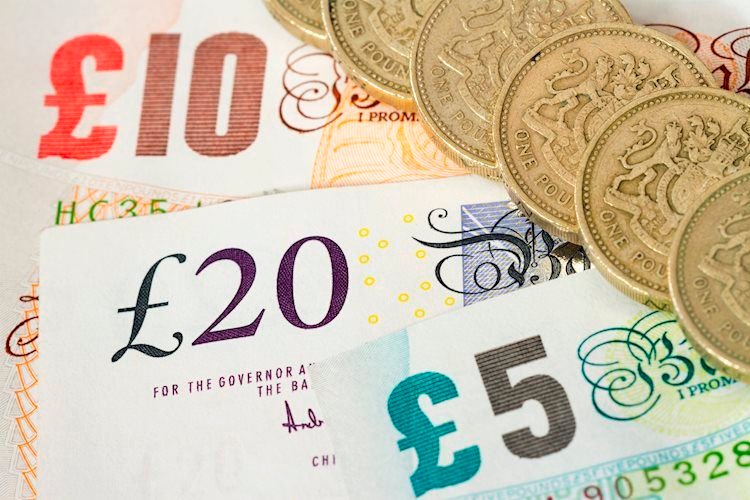- The Pound Sterling holds gains above 1.2500 inspired by strong UK Q1 GDP data.
- The UK economy expanded by 0.6%, moving out of the recession seen in the second half of 2023.
- Investors await UK employment and US inflation data for fresh guidance.
The Pound Sterling (GBP) exhibits strength above the psychological support of 1.2500 against the US Dollar (USD) in Monday’s late European session. The GBP/USD pair holds firmly as the US Dollar struggles to recover higher-than-expected Initial Jobless Claims for the week ending May 3, which raised concerns over the health of the United States labor market.
The confidence of financial markets for the US Federal Reserve (Fed) to start lowering interest rates from the September meeting has increased as US labor market conditions have cooled down. For now, investors shift their focus to the US Consumer Price Index (CPI) data for April, which will be published on Wednesday.
Annual headline CPI is forecasted to have softened to 3.4% from 3.5% in March. In the same period, the core inflation, which strips off volatile food and energy prices, is anticipated to have decelerated to 3.6% from the prior reading of 3.8%. Economists expect that the monthly headline and core CPI have grown at a slower pace of 0.3% from the prior reading of 0.4%.
Daily digest market movers: Pound Sterling capitalizes on multiple tailwinds
- The Pound Sterling holds strength inspired by the robust UK Q1 Gross Domestic Product (GDP) data released on Friday. The United Kingdom Office for National Statistics (ONS) reported that the economy expanded at a stronger pace of 0.6%, beating estimates of 0.4%. This led to an end to the technical recession registered in the second half of 2023.
- After the GDP data, UK Chancellor Jeremy Hunt said: “There is no doubt it has been a difficult few years, but today’s growth figures are proof that the economy is returning to full health for the first time since the pandemic,” Reuters reported.
- After strong UK growth data, the strength of the UK economy will now be tested on the grounds of labor market data, which will be published on Tuesday. Economists expect that the ILO Unemployment Rate for the three months ending March rose to 4.3% from the prior reading of 4.2%. Apart from the jobless rate, investors will keenly on the Average Earnings data that has been fuelling service inflation, which is almost double that of what should be consistent to bring inflation down to the 2% target.
- Annual Average Earnings Including Bonuses are estimated to have slowed to 5.3% in the three months ending March from the prior reading of 5.6%. A sharp decline in the wage growth momentum would boost expectations for the BoE to begin reducing interest rates in June.
- Last week, the BoE kept interest rates steady at 5.25% for the sixth time in a row. Overall, the BoE’s communication indicated that it is swiftly leaning toward policy normalization. BoE Deputy Governor Dave Ramsden joined policymaker Swati Dhingra and voted for a rate cut by 25 basis points (bps) to 5.0%. In the press conference, BoE Governor Andrew Bailey said the central bank could deliver more rate cuts than investors have anticipated.
Technical Analysis: Pound Sterling remains well-supported above 1.2500

The Pound Sterling advances to 1.2540 on Monday due to multiple tailwinds. The GBP/USD pair recovered sharply from 50% Fibonacci retracement (plotted from April 22 low of 1.2299 to May 3 high of 1.2634) near 1.2470. The Cable remains sticky to the 20-day Exponential Moving Average (EMA), which trades around 1.2520, suggesting a sideways trend.
The pair is still below the neckline of the Head and Shoulder (H&S) chart pattern formed on a daily timeframe. On April 12, the Cable fell sharply after breaking below the neckline of the H&S pattern plotted from December 8 low around 1.2500.
The 14-period Relative Strength Index (RSI) oscillates in the 40.00-60.00 range, suggesting indecisiveness among market participants.
Economic Indicator
Consumer Price Index ex Food & Energy (YoY)
Inflationary or deflationary tendencies are measured by periodically summing the prices of a basket of representative goods and services and presenting the data as the Consumer Price Index (CPI). CPI data is compiled on a monthly basis and released by the US Department of Labor Statistics. The YoY reading compares the prices of goods in the reference month to the same month a year earlier. The CPI Ex Food & Energy excludes the so-called more volatile food and energy components to give a more accurate measurement of price pressures. Generally speaking, a high reading is bullish for the US Dollar (USD), while a low reading is seen as bearish.
Read more.

























